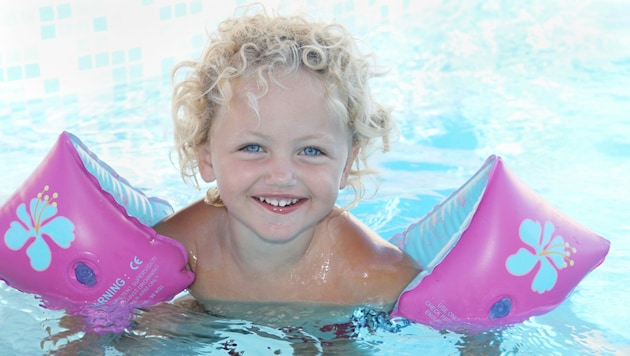Explained as easy as pie
“Why do I have to wear water wings?”
When parents go swimming with their children, the little ones often ask why they have to wear water wings. Some even get grumpy when parents insist. Read how adults can explain to the youngest children in a simple way when and why it is so important to wear a buoyancy aid.
First of all: it doesn't automatically have to be water wings. Your parents have probably used them to learn how to be safe in the water. Most children who are not yet able to swim now wear swimming discs or belts. Caution: Air mattresses, tires or inflatable water animals are fun and toys, but not suitable swimming aids.
You should never rely on them! It's very easy to lose control of them or be swept out to sea. That brings us to the point: you can't swim or you're not quite good enough yet. That's why your parents put an aid on you (like "wings") as soon as you approach a body of water. They do this for a reason: because many kids overestimate their abilities and mistakenly think they can already do it and frolic around in the water.
What's more, some adults are only distracted for a short time (unfortunately often just a few seconds) while their boy or girl is playing unprotected next to a pool or by the sea - and suddenly falls in. And then a serious accident happens.
If you can't swim, you'll drown without a buoyancy aid!
Unfortunately, children continue to drown year after year. Hopefully your parents have already talked to you about the great danger. Alongside suffocation, drowning is one of the most common causes of fatal accidents up to the age of five. It often doesn't even have to be a large lake or even the sea nearby. A garden pond, paddling pool, stream or even a rain barrel are also sufficient - they can all cost non-swimmers their lives.
Unfortunately, drowning happens very quickly and silently - because small children don't scream. Even if a boy or girl "only" almost drowns and can still be pulled out, this usually means nothing good. This is because they suffer from a severe lack of oxygen until they are rescued. This can result in serious and permanent disabilities.
Anyone can learn to swim from around the age of five
Knowing how to swim is therefore the best protection against drowning. Everyone should start learning from around the age of four or five. Perhaps your parents have already shown you how it works. Or you have been to a special children's course and received a nice certificate or even the early swimmer badge at the end. Then you can be really proud of yourself. Let yourself be celebrated properly!
You're already confident in the water, you think, and yet mom or dad never let you out of their sight? Rightly so, because even with good swimming skills, a child still needs supervision up to the age of 10. But at some point, many swimming exercises later, you will be just as good as your parents - or even better.
This article has been automatically translated,
read the original article here.













Kommentare
Da dieser Artikel älter als 18 Monate ist, ist zum jetzigen Zeitpunkt kein Kommentieren mehr möglich.
Wir laden Sie ein, bei einer aktuelleren themenrelevanten Story mitzudiskutieren: Themenübersicht.
Bei Fragen können Sie sich gern an das Community-Team per Mail an forum@krone.at wenden.